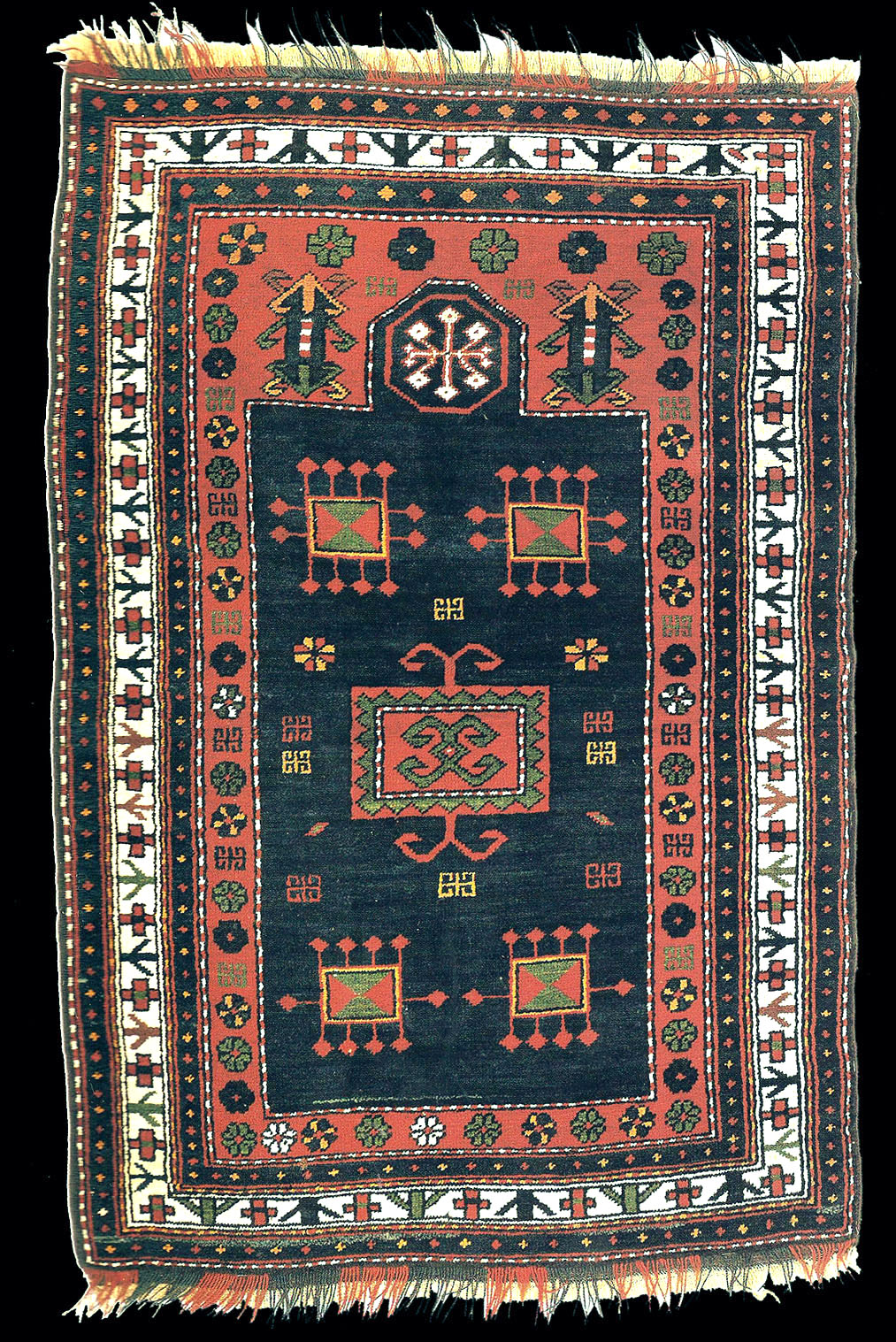|
Antique Kazak
Taus prayer rug with a dark-blue medallion, Tovuz District, Oysuzlu village, Azerbaijan.
published at Siyawouch Azadi "Azerbaijani Caucasian rugs" plate no:
177. Size: 90 x 133 cm
|
|
A dark-blue medallion has been woven into the dark brownish-red central
field. It has a projection at the top which makes up a prayer gable (tak).
Underneath, we can see the prayer niche (mihrab). L. Kerimov reports that
the four rectangles in the mihrab's four corners, the two beetle-like
figures on the right and left sides of the prayer gable (tak) and the
octagon constitute the seven spots that mark the seven parts of the body
that touch the ground during the sojud (bending to the ground) of the daily
prayer. The seven parts are the tip of the feet, both knees, both palms and
the forehead. The octagon is the spot for the sacred stone (mohr) which has
to be touched by the forehead. Faithful muslims are said to clearly show the
stone's pressure mark on their foreheads. The main border on a light ground
consists of an alternating row of cross-like motifs and a trunk with two
branches. It could just as well be a tulip. Two stripes on a dark-blue
ground with a simple row of lozenges enclose the main border.
Warps: wool, Z3S, beige
Wefts: wool, Z2, blackish brown
Knot Density: 25 x 40 = 1000 knots per square decimeter
 |

